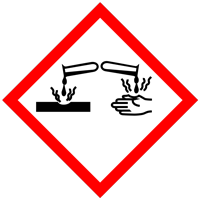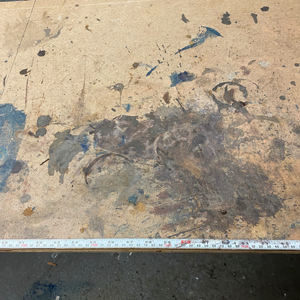How Safe is Mirroring?


Mirroring chemicals are safer than many household cleaners such as bleach and drain openers that you store under the kitchen sink.
The word 'chemical' causes automatic concern, but water, soap, salt and you - yourself - are chemicals. The world is made of chemicals although some are more harmful to living things than others. We have tried to address some frequently asked safety questions here.
Please contact us if you have additional questions.


Chemical Burns
The activator solutions for silver, gold, copper and galena mirrors are caustic (contain lye). Caustic solutions can irritate or burn your skin and especially your eyes. Wear protective gloves and eye glasses at all times. If you come into prolonged contact with these chemicals, flush the affected area with copious amounts of water, apply copious amounts of moisturizer and, if necessary, see your doctor.
Chemical Fumes
Mirroring chemicals contain ammonia and formaldehyde which can irritate the lungs. Our Multi Gas/Vapor Respirator is specifically designed to protect you from concentrations of these gases up to 10 times the Permissible Exposure Limit standard. Wear a respirator and make sure your shop is well ventilated.
The solvent in Black and Gray Mirror-Backing Paints is mineral spirits - the same solvent used in oil-based house paints. White, Black and Clear Lacquers are made with lacquer thinner and/or acetone. Use an exhaust fan or work by an open window when using these paints. Our Respirator filters out these solvents too.
Spray silvering sends a mist of chemicals into the air - wear a respirator. Our pouring technique does not. Pouring Silver is the least hazardous method of silvering.


Chemical Stains
Mirroring chemicals can stain your fingers, clothes and work bench. Use a small amount of the appropriate Silver Remover to remove stains on your hands and then wash your hands thoroughly. Wear gloves and a protective apron. You can protect your work bench with a layer of cardboard or newspaper. We do not use chromic acid (a toxic form of silver remover) in any of our products.
This photo shows a workbench in our manufacturing facility. As you can see we don't always take our own advice... this bench has been lovingly used for many chemicals.
Waste Disposal
We think that the phrase "dispose of contents in accordance with federal, state and local requirements" is not very helpful.
Our Waste Treatment Kits offer you an easy way to dispose of heavy metal waste water.
These Kits meet all the requirements of the US Environmental Protection Agency (EPA).
Fulminating Silver
Concentrated 3-Part Silver Solution mixed with Concentrated 3-Part Silver Activator can form an explosive mix called fulminating silver only if the mix is allowed to evaporate completely. When these chemicals are mixed with water, they cannot form fulminating silver. When Silver Reducer is added to the Silver Solution and Silver Activator - as it is in the waste water - it cannot form fulminating silver even when it has evaporated.
To prevent any risk of fulminating silver, always dilute our concentrated chemicals according to our instructions before using them. Keep all storage bottles and containers closed so that the chemicals do not evaporate.
Our 2-Part Silvering Chemicals combine the reducer with the activator so they cannot form fulminating silver. Silver is the only chemical we sell that might be dangerous if it evaporates.
Safety Data Sheets
Safety Data Sheets (SDS - formerly known as Material Safety Data Sheets or MSDS) are available in the Documents tab on the page for each chemical and at Safety Data Sheets.


